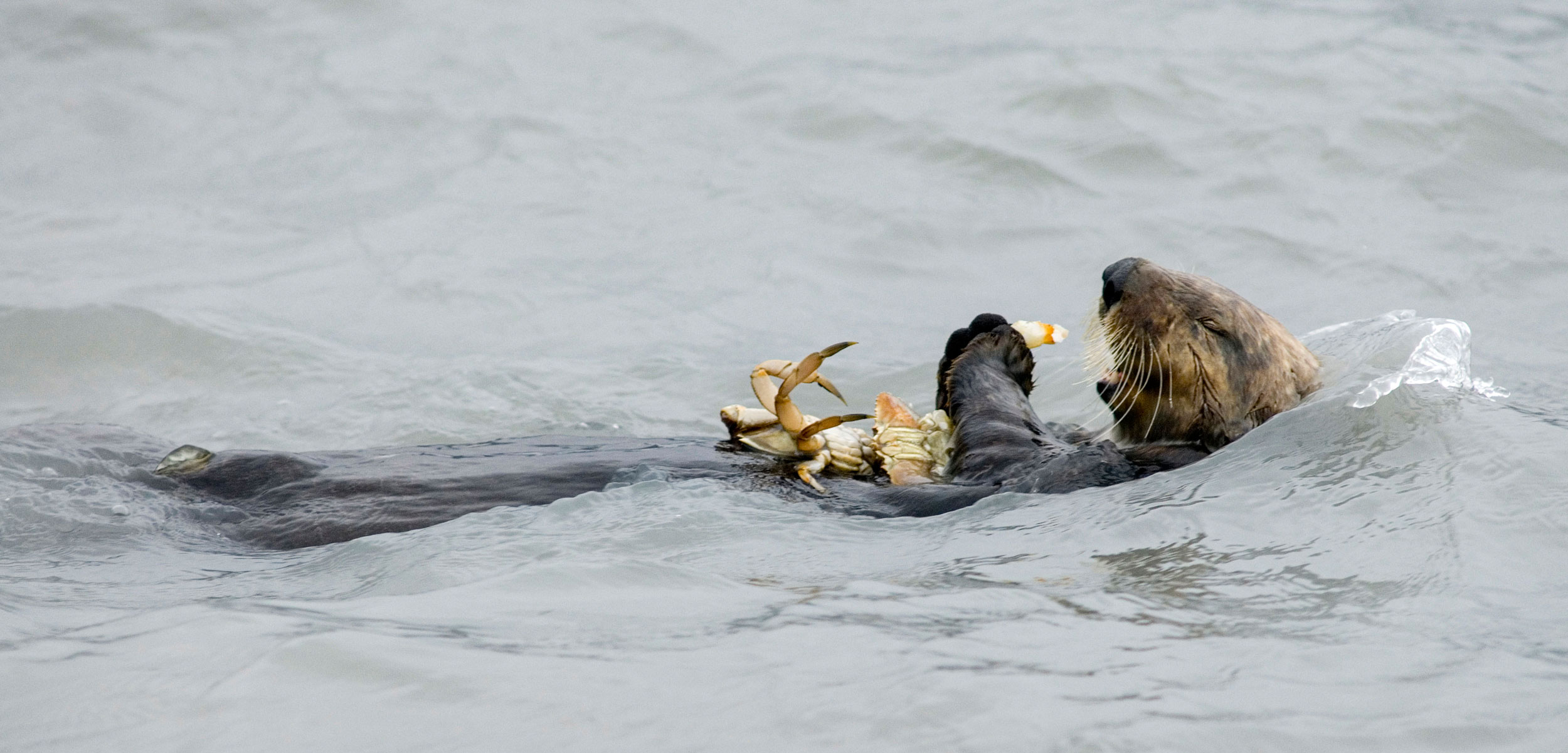For California Crabbers, Sea Otters Are Not a Threat to Dungeness Catch
New research shows that the Dungeness crab harvest in California is not affected by the resurgence of sea otters.
Article body copy
After being hunted to near extinction in the 19th century, sea otters from southeast Alaska to central California have made a remarkable recovery. But it’s one that is causing anxiety for those who make their living harvesting sea otters’ prey, including Dungeness crabs. While it has long been assumed that a steadily increasing population of sea otters would lead to lower crab catches, a new study shows that—in California at least—that’s just not the case.
Instead, says Andre Boustany, the lead author of the new study and a fisheries scientist with the Monterey Bay Aquarium in California, Dungeness crab landings have actually been increasing in areas that have sea otters. “It doesn’t seem like they have a measurable impact on crab populations.”
The study assessed commercial Dungeness crab landings in California ports from 1980 to 2018, breaking out three regions with sea otters: Half Moon Bay, Monterey Bay, and Morro Bay. Boustany says that despite the presence of sea otters, Dungeness crab populations are increasing in those areas because of improving environmental conditions that are more favorable to larval crabs. Similarly, he says, the decreasing Dungeness crab harvest in Northern California ports, where there are no sea otters, is likely due to climate change and higher levels of ocean acidification.
While sea otters are ravenous eaters—every day they consume around 25 to 30 percent of their body weight—Dungeness crab is not exactly their favorite food. Based on observing 117 otters conduct 57,186 feeding dives, the scientists found that Dungeness crab makes up as little as 1.6 percent of a sea otter’s diet on average.
The research comes on the tail of another recent study that shows that, in California, sea otters can act as ecosystem engineers, creating habitats that could be beneficial to the growth of juvenile Dungeness crabs.
The findings are good news for those working to reintroduce sea otters to Northern California, as they help allay concerns fishers might have about possible impacts on the US $50-million annual crab harvest.
“The Monterey Bay Aquarium is involved in sea otter reintroduction,” Boustany says. “We’ve heard concerns from the fishing community, and that’s what drove us to do this study. If we found there were negative impacts from sea otter population growth, we would take that into account and look at ways to address those concerns.”
But Boustany is cautious about extrapolating beyond California—especially to Alaska, where in 2018, the state senate called on the US federal government to control sea otter population growth in southeast Alaska because of the damage they are thought to be doing to the Dungeness crab fishery.
Unlike in California, where Dungeness crabs live in nearshore sandy habitats, in southeast Alaska, they live in small pockets of bays and inlets. Those geological features fragment the crab population and concentrate the fishing fleet. They are also particularly hospitable to sea otters, which now number roughly 20,000.
In southeast Alaska, sea otters are causing localized problems for the Dungeness crab fleet, says Adam Messmer, a research biologist with the Alaska Department of Fish and Game. While 2020 saw a healthy crab harvest, catches have been historically low recently.
“As a stock overall, the Southeast Dungeness crab are doing well,” Messmer says. However, he notes that there are some regions that used to be large producers that have now fallen off after the arrival of sea otters.
Boustany’s study references these site-specific concerns to reiterate that the focus of the research is the California coast.
The embattled California Dungeness crab fishery has struggled in recent years because of fishery closures caused by a climate change–related spike in whale entanglements and high levels of toxic domoic acid. But Boustany’s study suggests that, in California at least, sea otters, Dungeness crabs, and commercial fishers should be able to get along just fine.

